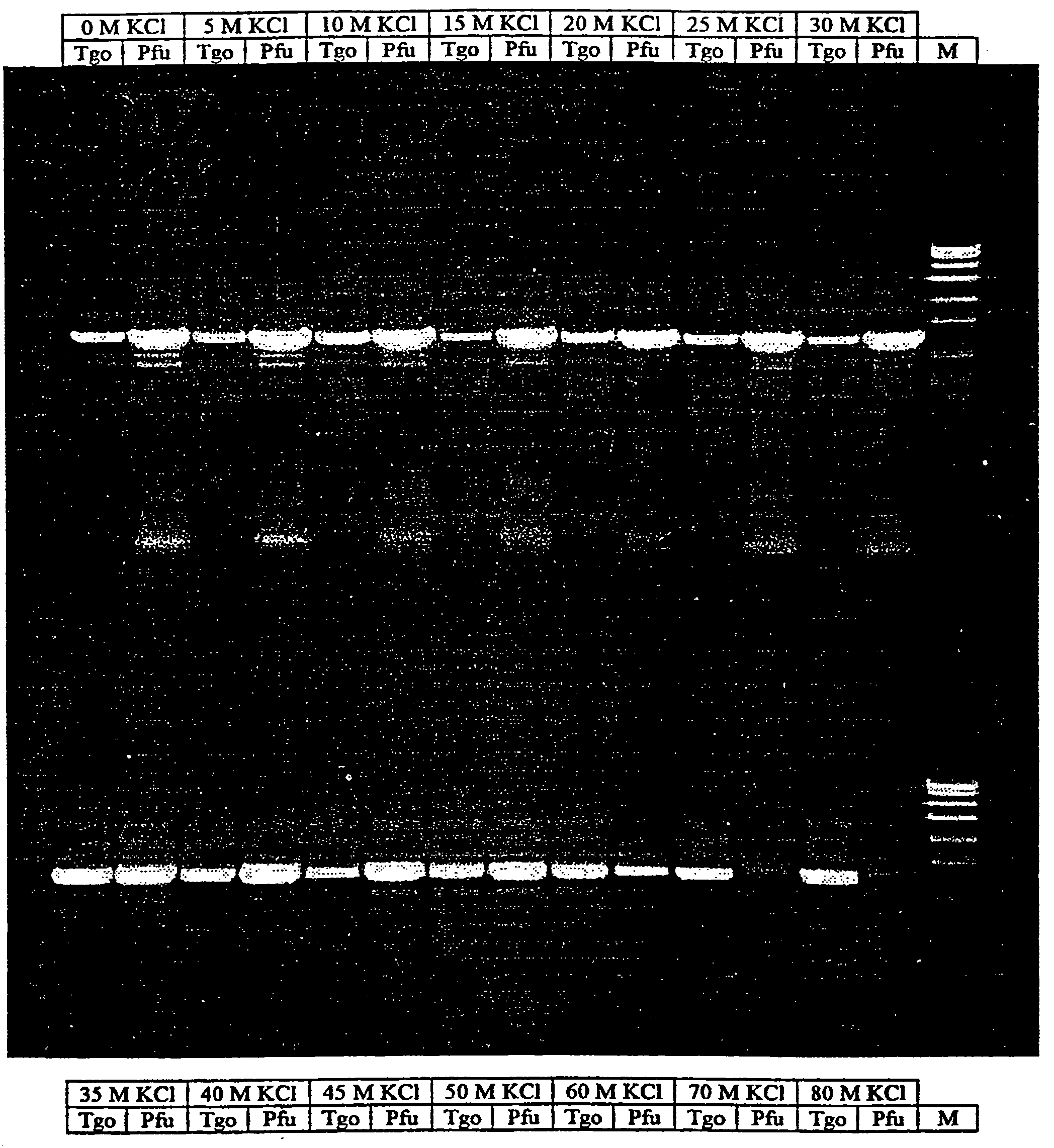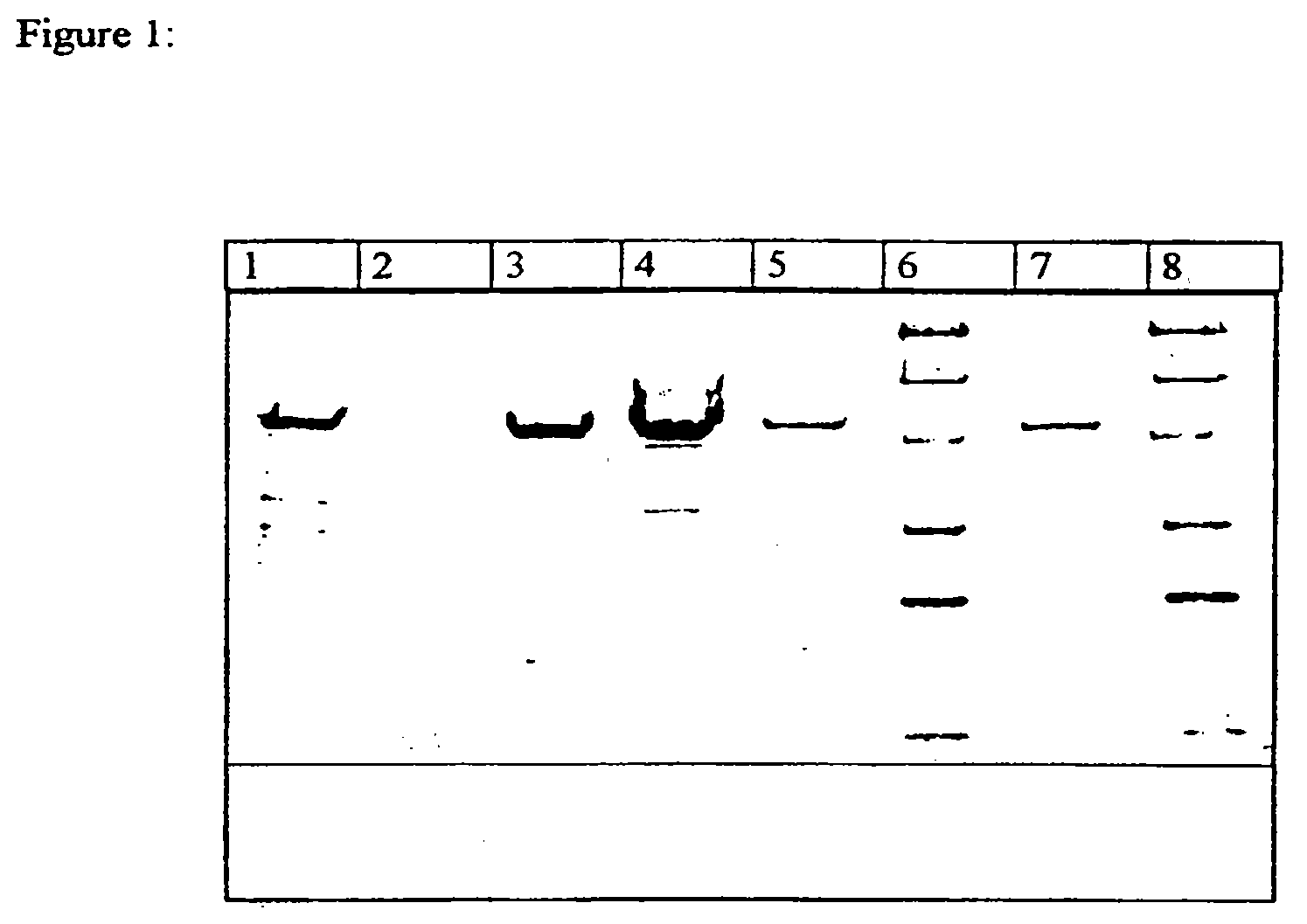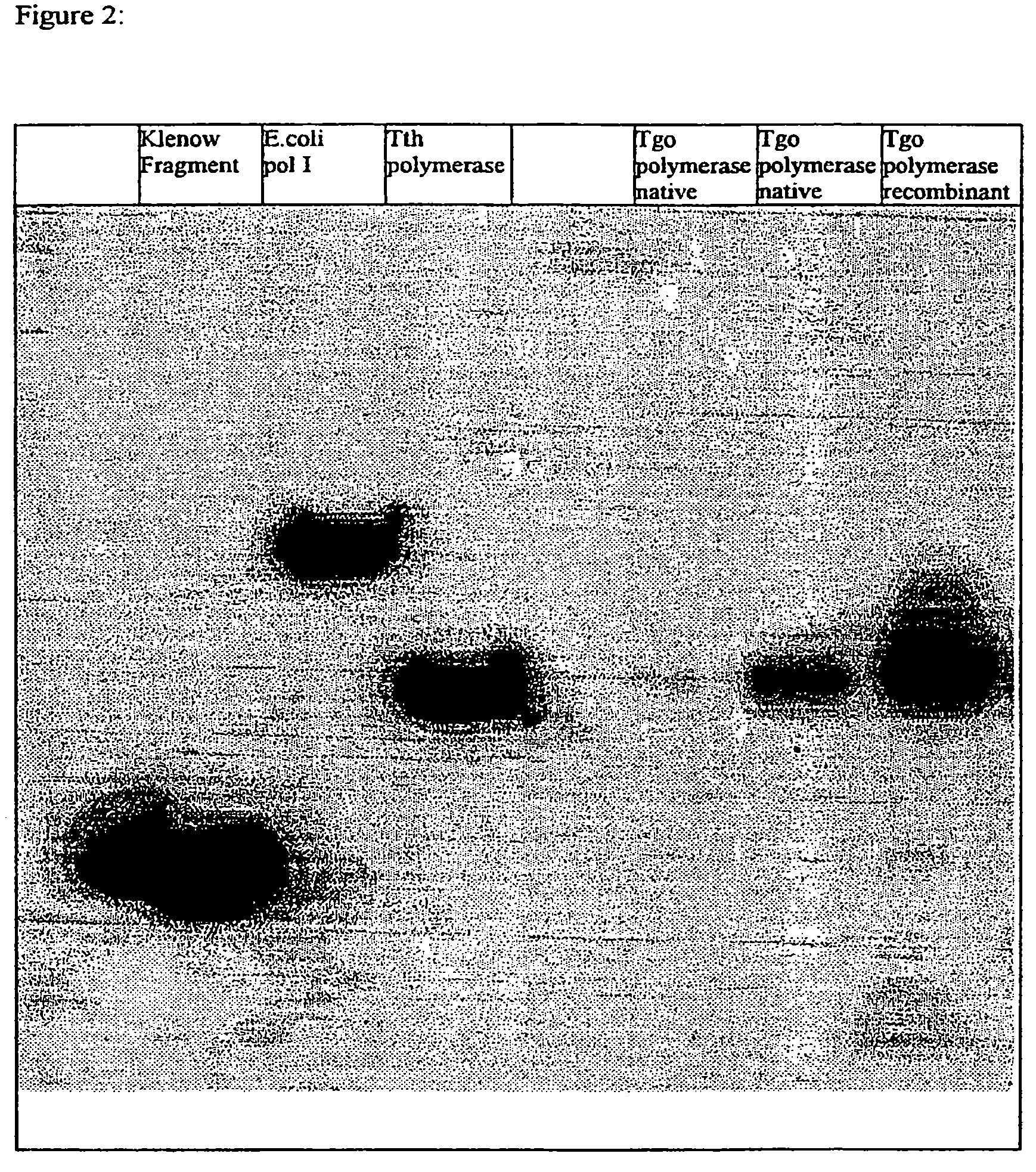Thermostable nucleic acid polymerase from thermococcus gorgonarius
- Summary
- Abstract
- Description
- Claims
- Application Information
AI Technical Summary
Benefits of technology
Problems solved by technology
Method used
Image
Examples
example 1
[0055]Purification of a thermostable DNA polymerase from Thermococcus gorgonarius.
[0056]Thermococcus gorgonarius (DSM 8976) was grown in the medium which was prepared as follows: A mineral solution containing KCl, 325 mg / l; MgCl2 2H2O, 2.75 mg / l; MgSO4 7H2O, 3.45 mg / l; NH4Cl, 0.25 mg / l; CaCl2 2H2O, 0.15 mg / l; KH2PO4, 0.15 mg / l; NaCl, 18 g / l; NaHCO3, 1 g / l; trace elements, 4 ml / l (Balch et al., Microbiol. Rev., 43:260 (1979)), vitamins, 4 ml / l (Balch et al., supra); Rezazurin, 1 mg / l; 0.4 ml / l of a 0.2% solution of Fe(NH2)2(SO4)2 7H2O was boiled and cooled. The following components were added to the final concentrations as indicated: Peptone, 5 g / l; yeast extract, 1 g / l; Na2S.9H2O, 250 mg / l and cystein-HCl, 250 mg / l, the pH was adjusted to 6.2-6.4. The incubation temperature was 88° C. The cells were cooled to room temperature, collected by centrifugation and stored at −70° C. 6 g of cells were suspended in 12 ml of buffer A (40 mM Tris-HCl, pH 7.5; 0.1 mM EDTA; 7 mM 2-mercaptoethan...
example 2
[0058]Cloning of the T. gorgonarius DNA Polymerase
[0059]1. DNA from T. gorgonarius was isolated and purified by the method described in Lawyer, F. C. et al., J. Biol. Chem., 264:6427-6437 (1989).
[0060]2. The DNA was restricted with BamHI, separated on an low melting point agarose gel, denatured and blotted onto a nylon membrane. The blot was probed with a Digoxigenin labeled oligonucleotide of the sequence shown in SEQ ID NO:1. A signal could be detected and the region corresponding to the hybridization signal was cut out of the gel. The gel piece was melted and the DNA isolated by ethanol precipitation.
[0061]3. The DNA fragments isolated were ligated into a plasmid vector, hybridized with SEQ ID. NO:1. The plasmid DNA from positive clones were isolated and the nucleic acid sequences of the insert determined. The DNA sequences obtained were then compared with sequences of DNA polymerase genes published in Braithwaite, D. K. and Ito, J., Nucl. Acids Res., 21:787-802 (1993).
[0062]4. F...
example 3
[0066]Expression of Recombinant T. gorgonarius DNA
[0067]The vector from example 2 was transformed into E. coli strain LE 392 pUBS 520, cultivated in a fermentor in a rich medium containing the appropriate antibiotic. Induction was performed at an optical density of 1.25 A540 with 0.5 mM IPTG. The DNA polymerase from T. gorgonarius may also be cloned and expressed by other methods.
[0068]Cells are harvested at an optical density of 5.4 A540 by centrifugation and frozen until needed or lyzed by treatment with lysozyme to produce a crude cell extract containing the T. gorgonarius DNA polymerase activity.
[0069]The crude extract containing the T. gorgonarius DNA polymerase activity is purified by the method described in Example 1, or by other purification techniques such as affinity-chromatography, ion-exchange-chromatography or hydrophobic-interaction-chromatography.
PUM
| Property | Measurement | Unit |
|---|---|---|
| Mass | aaaaa | aaaaa |
| Mass | aaaaa | aaaaa |
| Molecular weight | aaaaa | aaaaa |
Abstract
Description
Claims
Application Information
 Login to View More
Login to View More - R&D
- Intellectual Property
- Life Sciences
- Materials
- Tech Scout
- Unparalleled Data Quality
- Higher Quality Content
- 60% Fewer Hallucinations
Browse by: Latest US Patents, China's latest patents, Technical Efficacy Thesaurus, Application Domain, Technology Topic, Popular Technical Reports.
© 2025 PatSnap. All rights reserved.Legal|Privacy policy|Modern Slavery Act Transparency Statement|Sitemap|About US| Contact US: help@patsnap.com



